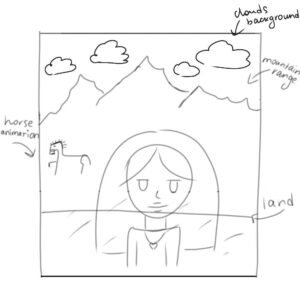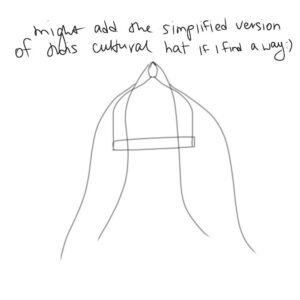Concept
For my midterm project, i created an interactive experience at the airport that is a bit different from the usual way we think about travel. Instead of conventional destinations, the airport’s departure board offers emotional states that users might be seeking: peace, guidance, restart, sign, purpose, direction, and inspiration.
The idea behind this project came from this simple question:
“What if people travel not to visit a place, but to experience a certain emotion?”
Reflecting on my own travels, I realized that my strongest memories aren’t necessarily about locations themselves, but about how those places made me feel. So, once a user chooses their destination, they receive a quote/message they might need to hear.
Project features
In my project, there are three main pages:
-
Welcome Page:
- The user is greeted with a sky background and a welcoming message, all while having airport sounds in the background.
- A “Start” button starts the experience.
-
Airport Scene:
- Once the user clicks “Start,” they are transported to an airport background with lofi sounds.
- They need to click on the departure board to proceed.
-
Departure Board Page:
- This page focuses on the departure board, listing different emotional “destinations.”
- Lofi music plays softly in the background to enhance the experience
- Then, clicking on a specific “destination” triggers a pop-up message with a quote related to that emotion or the desired state a person wants to achieve.
Problems I ran into
Some ideas I initially planned like zoom-in features and extra interactive elements were difficult to make in the given timeframe. So i had to make the most essential features first.
So, the biggest challenge was finding suitable images online that matched the vision I had in my mind. So, i had to create some elements myself and manually edit the departure board to fit my concept and include the emotional destinations. I also combined multiple images to achieve the desired design for each stage of the experience.
Initially, I tried drawing the entire page from scratch, but I later realized that wouldn’t work well with the multiple pages interactive format I wanted.
Future improvements
If I were to expand this project, I would like to add animations to create smoother transitions between pages and implement a customized quote generator where i take input like the name of the user to make it feels personal.
Despite the challenges, I’m proud of how this project turned out. I put in a lot of time and effort to make it look as close as possible to what I imagined. By making this project, i could represent a concept I resonate with: travel as an emotional journey rather than just a physical one.
Link: https://editor.p5js.org/Ellina_Chermit/full/i1vywV_MT




